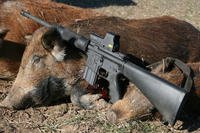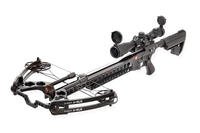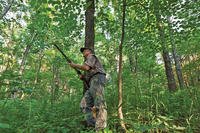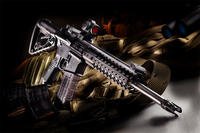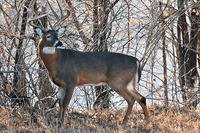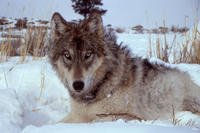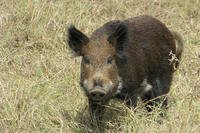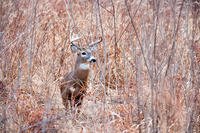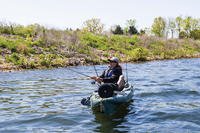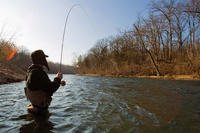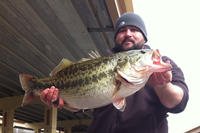As ARs move into a new hunting realm, manufacturers are responding with caliber choices that will take any North American big-game animal.
by Peter B. Mathiesen
Back in the 1950s, Eugene Stoner of the Fairchild ArmaLite Corporation developed the AR. The gun was originally to be chambered in 7.62mm (essentially a .308), for use in Southeast Asia. Pressures from opposing camps fueled dissent within the ranks of the U.S. military, and had large versus small caliber protagonists at odds.
Many believed that combat in the Asian Rim would be in close quarters, creating a specific need for a lightweight, accurate, small caliber. The military favored the .222 Special, later to become the .223 or 5.56 NATO because it offered soldiers more ammo carrying capacity. An AR weighed about 6 pounds and offered far less recoil than the NATO round, the 7.62 or the .308. The tumbling-bullet theory also fueled the small-caliber argument.
When comparing the rifles of the Korean conflict to World War II, many held the opinion that no .30 caliber was a good choice. Colt purchased the license to make the AR in 1959 and when their AR landed on the shores of Vietnam in the early 60s, the gun was firmly committed to the .223 round.
Hunters found the .223 to be a great round for varmints and other medium to small game, but discussions and controversy rage on the practicality of the .223 for bigger game. Rather than enter the .223 debate, this article will highlight some of the other hunting centerfire calibers that are now commonly available in the AR platform, many more than adequate for the biggest of game.
Please note, variations and custom order calibers are available from a vast list of manufacturers and parts houses. Some are a simple drop in upper for the AR you already own. Others require different magazines and/or buffer springs. The following overview provides average performance values of the predominant centerfire cartridges in production ARs. However, many others do exist. In 2010, expect to see .300 Short Mag and .358 Winchester rifles go into production. See your local gun dealer if you don’t find the caliber you’re looking for in the list below. Chances are, you can probably custom order it.
The .223 Family – Listed below are a few of the cartridges based on the .223 and available in ARs. Many more are sure to follow.
.17 Remington
A fun, accurate little round. If you haven’t shot it, you need to. This cartridge is ideal for small game and varmints up to 500 yards. Bullet weights range from 20 to 30 grains with a screaming velocity of over 4,000 fps. Very light recoil, however the round can be quite wind sensitive, and you need to keep them clean. Only a few companies offer this round in regular production. However, look to next year’s line for more AR companies to join the.17 Rem. ranks.
.204 Ruger
Ruger and Hornady developed this round, that’s a .222 mag necked down to .204 (5mm). With a muzzle velocity of over 4,000 fps this small, 32- or 40-grain bullet shoot exceptionally flat. A 45-grain bullet available for handloading may be the perfect match for the AR system. Perfect for distance shooting at any small game, however recoil is evident, and the gun is quite loud in shorter barrels. Like the .223, this round is typically not legal for big game animals.
.223 Winchester
In the AR platform, this cartridge, without question, has sold the most models and units. The .223 has proven itself reliable and accurate. An array of ammo is available in both economy and premium loadings. Typically, bullet weights range from 40 to 90 grains with speeds ranging from 2,700 to 3,700 fps depending on bullet weights and powders. Bullet weights over 55 grains call for a faster twist barrel. It’s an extremely adaptable cartridge for any kind of small game. When demand soared in 2008 through 2009, prices were high and availability scarce. However, as demand has flattened, prices have settled and it’s still comparatively inexpensive to shoot.
The .308 Family – Since the AR was originally designed for the .308 case dimensions, chambering it for any of the .308 based wildcats is a natural. Here are a few in the .308 family, and others, like the .358 Winchester are sure to follow.
.243 Winchester
Winchester created this necked down .308 cartridge with a .24 bullet. Very fast, with light recoil, it can be an effective round. It’s a fine white-tailed deer round and one of the most common deer cartridges in Europe. Introduced in 1955, the round delivers between 3,000 and 4,000 fps with bullet weights ranging from 55 to 105 grains.
.260 Remington
Originally referred to as 6.5-08 A-Square and released in 1996, this necked down .308 cartridge found its way to shooters with Remington’s introduction in 1997. Bullet weights range from 129 to 140 grains with muzzle velocities averaging about 2,900 fps. It’s not an easy round to find, but it remains a favorite of many shooters in the southwest, and a great match for the AR platform.
7mm-08 Remington
Developed in the late 1950s, the cartridge is a .308 case necked down to a 7mm (.284) and brought to market by Remington in 1980. Bullet weights range from 100 to 175 grains. With velocities ranging up to 2,800 fps, it’s considered to have a slightly flatter trajectory than a .308. Perfect for any big game in North America with the exception of brown bear or moose.
.308
There’s a reason snipers use the .308. It’s a classic round that is accurate with proven performance on big game. You can find ammo anywhere, and the choices are extensive with 125 to 185-grain bullets at most stores. With super down-range performance out to 300 plus yards, the .308 is one of the most effective calibers for any game in North America.
Specialty Cartridges – This group of calibers is manufacturer specific or task specific, not based on either the .223 or .308 cartridges.
.30 Remington AR
Remington’s new .30 cartridge is a significant alternative to the .308 because you can shoot this in a lightweight AR-15 platform saving about four pounds of gun weight with a scope compared to the heavier AR-10 big-caliber rifles. Bullet weights are 125 grains with up to 2,800 fps. It is based on the .450 Bushmaster case necked down to .30 caliber. This cartridge has a practical range beyond 300 yards. Remington says it carries like a .223 and hits like a.308.
.338 Federal
This powerful round adapts well to large North American big game like elk or moose. Usually loaded with 180 to 210-grain bullets, typical muzzle velocities range between 2,700 to 3,200 fps. Ammo is a little pricey and not always available in a large selection. The round can pack significant recoil. That said, it’s a favorite of many Western big-game hunters and provides a lot of flat shooting muscle for the AR platform.
.450 Bushmaster
It is a proprietary cartridge developed by Bushmaster and loaded by Hornady. Anything you can do with a .45-70, you can pretty much do with the .450. Sure to become a favorite with dark woods deer and bear hunters and a natural for Texas hogs. This is a big case with lots of fans who have affectionately nicknamed the cartridge, “The Thumper.” It’s usually loaded with 250-grain bullets that leave the muzzle at 2,200 fps. Sure to become a favorite of bear guides in the West and Alaska, this hefty bullet has surprising range. A great big-game cartridge, as long as you’re not taking very long shots.
.458 SOCOM
This proprietary Rock River Arms case is one of the largest production cartridges available in an AR platform. It is specifically designed for maximum stopping power. Commonly formatted with 300-grain bullets, loaded by CorBon, this round is also similar in performance to the .45-70. Traveling at speeds of 2,100 fps, it has proven very accurate. The recoil is about that of a 20-gauge shotgun in the AR. A fine cartridge for boars, bears, deer and any large game you want to put down hard and fast. Drop in uppers for standard lowers are available from Rock River Arms.
| .17 | .204 | .223 | .243 | .260 | |
|---|---|---|---|---|---|
| ArmaLite | N | N | Y | Y LP |
Y |
| Bushmaster | N | N | Y | N | N |
| Colt | N | N | Y | N | N |
| DPMS | N | Y | Y | Y | Y |
| L&G Weaponry | N | N | Y | N | N |
| Smith & Wesson M&P | N | N | Y | N | N |
| Olympic Arms | Y LN |
N | Y | Y SSM |
N |
| Remington | N | Y | Y | Y | N |
| Rock River | N | N | Y | N | N |
| Spikes Tactical | N | N | Y | N | N |
| Stag Arms | N | N | Y | N | N |
| Wilson Combat | N | N | Y | N | N |
| .30 Rem AR | 7mm-08 | .308 | .338 Federal | .450 Bush master | .458 Socom | |
|---|---|---|---|---|---|---|
| ArmaLite | N | Fall 2010 | Y | N | N | N |
| Bushmaster | N | N | N | N | Y | N |
| Colt | N | N | N | N | N | N |
| DPMS | Y | N | Y | Y | N | N |
| L&G Weaponry | N | Y | N | N | N | Y |
| Smith & Wesson M&P | N | N | N | N | N | N |
| Olympic Arms | N | N | N | N | N | N |
| Remington | Y | Y | Y | N | N | N |
| Rock River | N | N | Y | N | N | Y |
| Spikes Tactical | N | N | N | N | N | N |
| Stag Arms | N | N | N | N | N | N |
| Wilson Combat | N | N | N | N | N | N |
Y = Yes
N = No
LN = Limited Numbers in 2010
LP = Limited Production
SSM = In Super Short Mag only

